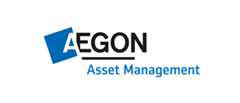
To test whether ESG scores interact with stock returns in emerging markets, we created three different portfolios.
At 11 December 2019, the world’s largest IPO of oil-producer Saudi Aramco made it the most valuable company in the world with around $2 trillion in valuation. A few days later, MSCI decided to include it in the MSCI Emerging Markets index and, as a result, the company was added to the portfolios of many investors who passively followed this index. Is this a case of efficient markets or a widespread lack of integrating Environment, Social and Governance (ESG) factors? In this paper, we explore the relation between an ESG-oriented asset allocation and the returns of emerging market equity portfolios as part of our multi-manager capabilities. We take Saudi Aramco as a case study throughout the article, but there are various other examples that could have been used.
The case of Saudi Aramco shows that if investors want to take ESG into consideration, they can ensure that their ends and beliefs are met by undertaking an active approach.
Empirical evidence on relation between ESG and return
To test whether ESG scores interact with stock returns in emerging markets, we created three different portfolios containing the stocks of the companies with the best (20%), middle (60%) and worst (20%) ESG raw scores each year. As Exhibit 1 clearly shows, a best in class strategy (so-called best portfolio) would have led to higher returns over the period 2014 – 2019, while a portfolio that consists of the worst ESG companies (so-called worst portfolio) would have performed substantially worse than the so-called mid portfolio. Applying a Fama-French (1993) three factor model gives the following conclusions:
- The risk-adjusted return of the best portfolio was significantly higher than that of the worst portfolio (using a 95% confidence interval)
- The best portfolio has a substantial lower exposure to market risk, small minus big (SMB) and high minus low (HML) factors.
Academic and professional literature points to the fact ESG performance appears to be a free lunch, possibly even improving risk adjusted returns by reducing specific risks, such as transition risk. However, the future will show to what extend this historical interaction was the result of, and is robust to, the increasing attention to socially responsible investing.




